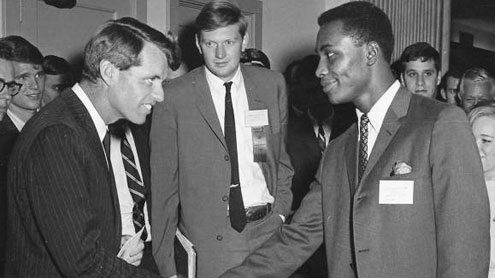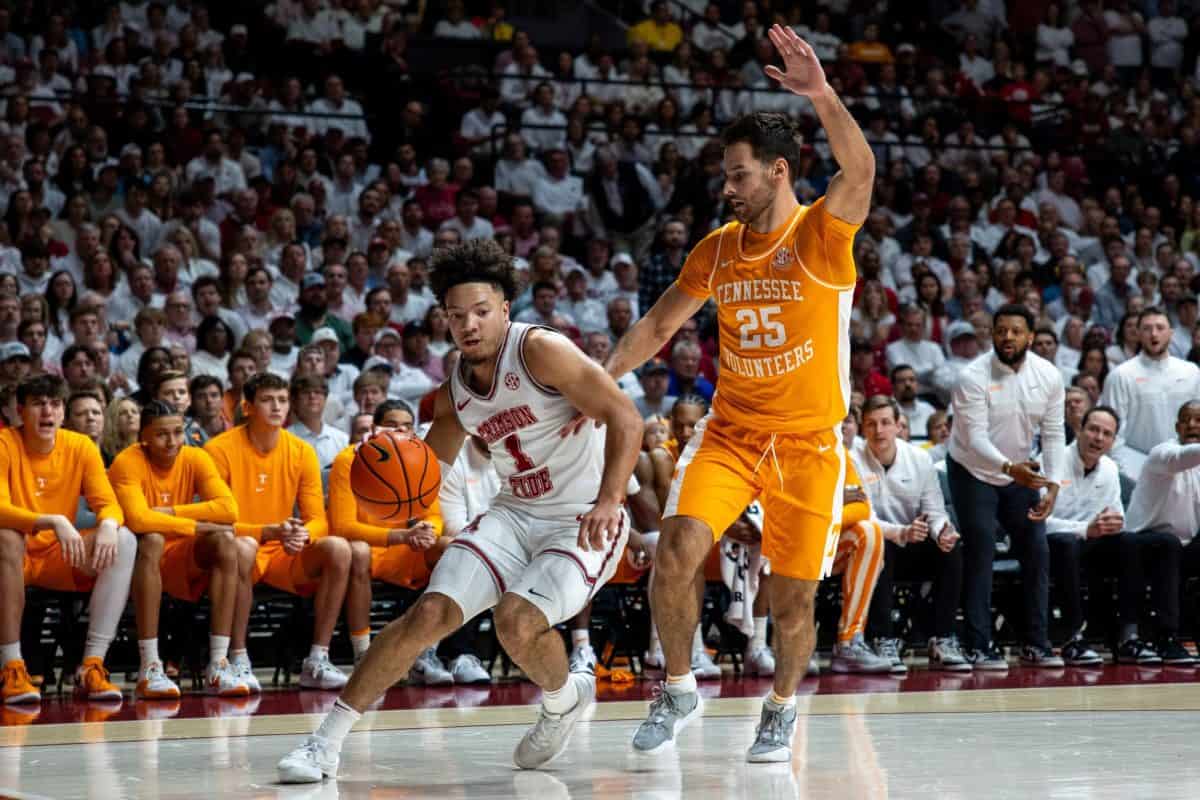From concerts and lectures to record-making sports events, Foster Auditorium has been a point of history in the making at the University of Alabama since it was built. This timeline helps tell the tale of a building that was once the hub of the University, soon reopening with hopes of fostering new glory days.
1939—
Foster Auditorium was built in 1939 and had a seating capacity of 5,400. It was named for University of Alabama President, Richard Clarke Foster. Foster initially housed a variety of events including class registration, graduation exercises, concerts, lectures and indoor athletics, such as men’s basketball games. President Foster died in office in 1941.
1945—
World War II raged overseas, but the “Khaki Kavalkade,” a huge musical event featuring 100 Army performers, brought a little hope and entertainment to Tuscaloosa. 3,000 tickets were sold for the May 25 show at 8 p.m. in Foster Auditorium. The Tuscaloosa News called it “one of the entertainment highlights of the season.” The show was presented by Northington General Hospital and the Tuscaloosa County War Finance Committee, with tickets available only to those who bought series “E” war bonds that were used to finance WWII. It featured performers such as the Army Dance Orchestra and the Northington Swingsters.
1949—
Foster had a crowd of 5,000 students, faculty and fans on Feb. 2 at 7 p.m. as the Alabama men’s basketball team took on the Kentucky Wildcats in a highly anticipated game. The Wildcats were defending SEC, NCAA and Olympic champions that year, already 14-1 that season and heavy favorites to win. The Crimson Tide hopefuls under Coach Floyd Burdette fought hard but lost to the Cats with a final score of 56-40. The game was broadcasted live from Foster on both of Tuscaloosa’s local radio stations. Kentucky went on to win the SEC and NCAA titles again that year, with a final record of 32-2.
1954—
The annual Fireman’s Ball was held in Foster from 8 p.m. to midnight on Thursday, May 6. This event was open for the public to attend and featured visiting guest firefighters attending the State Training School for Firemen that occurred at Northington General Hospital the following Monday. Proceeds from the dance tickets went toward purchasing equipment for Tuscaloosa’s fire prevention program.
1955—
Basketball history was made on Jan. 4 when UA center George “Bama” Linn from Ohio hit the longest 3-point field shot ever recorded. The field goal was 84 feet, 11 inches against North Carolina. The shot was featured in Sports Illustrated and is commemorated at the Naismith Memorial Basketball Hall of Fame. A brass marker was placed in the gym floor to indicate the location of the shot. Linn and seven of his teammates went on to make up the UA “Rocket Eight” team in the 1956 season, which finished 14-0 in the SEC and 21-3 overall. The field goal record has since been broken many times, and currently holds at 89 feet, made by Hornets point guard Baron Davis in 2001.
1963—
Governor George Wallace brought Foster Auditorium into the national spotlight with his infamous Stand in the Schoolhouse Door, physically preventing two African-American students from entering the building for class registration. This prompted President John F. Kennedy to deploy the National Guard to maintain order on the University campus and force Wallace to step away.
1968—
New York Senator Robert F. Kennedy spoke to around 4,000 students in Foster on March 18 during his visit to the University as part of the Emphasis program, in which he urged Alabamians to set aside their differences and “join the nation as partners in a common future.” Kennedy stayed as a guest that night in Bryant Hall, home of student athletes, as a guest of Paul “Bear” Bryant before traveling to speak in Birmingham. Just three months later, Kennedy was assassinated in Los Angeles.
1971—
On Feb. 17, Foster welcomed the Detroit Symphony Orchestra to perform at the University as part of the University Concert Series. The program was directed by Swedish conductor Sixten Ehrling. According to Time magazine, Ehrling brought “a dashing and vigorous image to the Detroit podium.” Performers on the roster included Richard Strauss, Rachmaninoff, Rubenstein and Stravinsky.
1976—
Tuscaloosa native and professional boxer Edgar Ross returned home to defend his Southern Junior Middleweight Champion title against Juan Jose Hernandez on March 26 in Foster Auditorium. “Mad Dog” Ross had a record of 28-1-1 professionally and was quoted as saying “I have always wanted to fight in front of my friends. Now the opportunity has presented itself.” Ross won the fight and went on to continue to defend his title.
1984—
Foster saw a boost of culture, especially in the way of music, as folk-rock group R.E.M. played on Sept. 22 in the auditorium. The very next week, Foster hosted rock band The Go-Go’s for the ’84 Homecoming concert. In October, the Neville Brothers took the stage. Large concerts such as these were moved to Foster due to vibrations that caused asbestos to shake loose in Memorial Coliseum. “Once we reconciled to pursuing small shows, we made an effort to get bands that would have a strong appeal to students,” said Robert Hoelscher, former director of student life for Union Programs at UA.
Foster continued to house UA volleyball until 1996, when the team moved into “The CAVE” at Coleman Coliseum, where men’s and women’s basketball now play. In 2009, it was announced that the University would begin renovations on Foster, which are now complete.
Beginning this upcoming season, women’s basketball will move back into its old home in Foster along with volleyball. The historic building may still hold infamy for Wallace’s stand in 1963, but the University can now look forward to many new traditions being built inside those historic walls.









